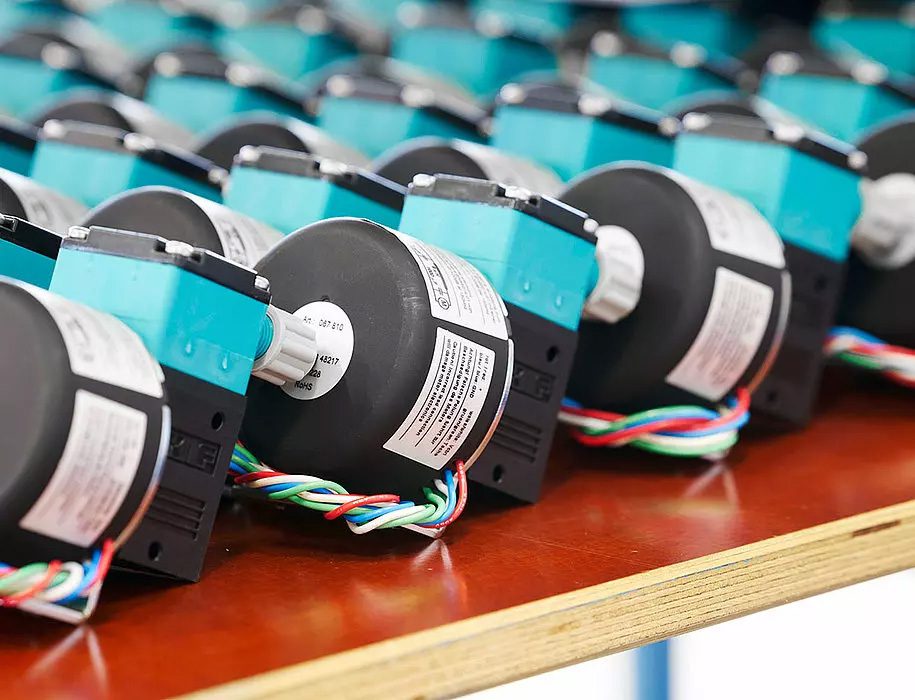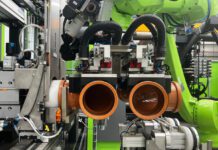
The efficiency and versatility of membrane pumps have made them indispensable in numerous industries. But how do they work? Pumps manufacturer KNF explains.
High-performance membrane pumps operate by harnessing the power of a flexible diaphragm to move liquids or gases. Their use preserves the safe handling of corrosive and sensitive fluids.
What is a membrane pump?
Also known as a diaphragm pump, this kind of pump is a compact, durable, and low-maintenance positive displacement pump that uses the return action of a flexible membrane or diaphragm to move liquids and gases and to generate a vacuum or pressure. Unlike other pump types, they do not rely on other mechanical parts – no other parts come into contact with the transferred media other than the valves. Instead, they use the diaphragm’s stroke action to draw and discharge liquid or gas.
More detail on how they work
The diaphragm in a membrane pump acts as a dynamic seal between the liquid or gas being pumped and the pump drive (and the environment). It minimizes leakage to near zero. The diaphragm makes these pumps ideal for handling corrosive, abrasive, or sensitive fluids, as the risk of contamination or damage to the pump components is minimised.
Membrane pumps operate on a simple yet effective two-stroke principle.
• Downward stroke: During the downward stroke, the diaphragm moves away from the inlet, creating a pressure in the pump chamber which is lower than the inlet pressure. This vacuum causes the inlet valve to open, allowing the liquid or gas to be drawn into the chamber through the inlet valve. As this happens, the outlet valve remains closed, preventing backflow of the media from the outlet side.
• Upward stroke: To move the media out from the pump chamber, the upward stroke moves the diaphragm towards the outlet, pressurizing the media in the chamber. This pressure causes the inlet valve to close to prevent backflow while the outlet valve opens, letting the pressurized media out.
Where are they used?
Membrane pumps have applications in sectors including medical, chemical, food and beverage, pharmaceutical, energy, inkjet printing, and analytical instrumentation. The ability to handle a wide range of sensitive, aggressive, or corrosive chemicals is often a key motivator for specifying them.
Their ability to create a reliable vacuum and resist chemical corrosion and abrasion also suits them to laboratory applications including rotary evaporation, filtration, and solid-phase extraction, ensuring the safety and integrity of the pumping process.
They are deployed anywhere there is a need for the smooth and efficient transfer of liquids and gases with complete precision, reliability, and safety while safeguarding the integrity of the media they handle.
Alongside their compact design, membrane pumps have unique characteristics that set them apart from other pump types. These include:
• Self-priming: They can prime themselves to generate pressure and start pumping without manual priming.
• Dry-run safe: Pumps that transfer liquids can operate for long periods without sufficient liquid, or even when dry, without causing damage.
• Oil-free functioning: Oil used within the pump is kept separate from the pump parts that come into contact with the media.
• Chemical resistance: Membrane pump head parts and diaphragms as well as valves can be made from various materials to ensure compatibility with almost all chemicals.
• High gas tightness: Even without a secondary membrane, membrane pumps are inherently gas tight. To further reduce the risk of gas leakage, a safety membrane can be fitted in case of damage to the primary membrane.
• The pulsating flow they generate due to the reciprocating action of the membranes can lead to vibrations or noise that may be undesirable in certain applications or cause system damage. To address this issue, they can be fitted with multiple pump heads and/or pulsation dampeners and silencers.
Multiple pump heads can be used in a single pump to minimize the pulsation. By alternating the motion of the membranes, the fluid flow can be made smoother, reducing the pulsation effect. Pulsation dampeners can be installed on either the suction side or pressure side of the pump.
Selecting the right pump
Factors to consider include:
• Liquid characteristics: An appraisal of chemical compatibility, viscosity, and the level of particulates present in the liquid is important. In some cases, a viscous fluid pump may be better suited to achieving the required flow rate.
• Gas characteristics: Gases also require a thorough understanding of their characteristics. The demands made of the membrane pump will vary depending on the gas type, its isentropic exponent, its density, its humidity and its temperature.
• Flow rate and pressure: Determine the required flow rate and pressure to select an appropriate pump.
• Environmental factors: Temperature, pressure, space limitations, and the presence of volatile atmospheres all have a bearing on selecting an appropriate pump.






